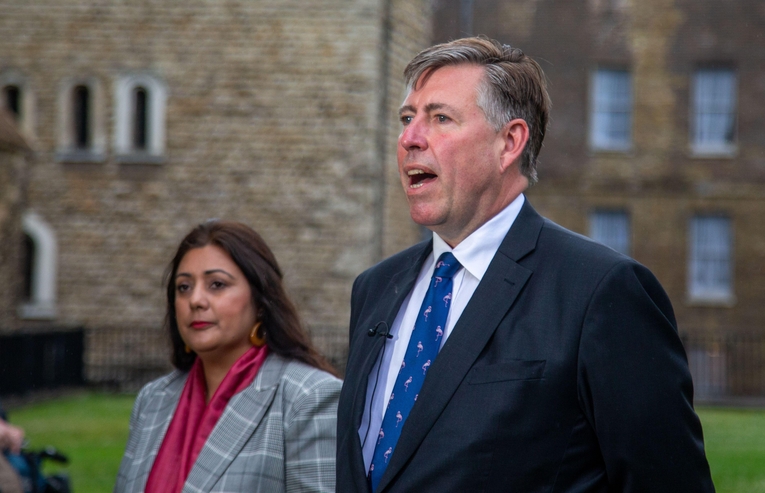Throughout the last six years, the 1922 Committee of Conservative backbench MPs has been at the heart of events. This powerful committee traditionally lurks behind the scenes and in the political shadows, but as we have seen, it then emerges dramatically to take on a more prominent role.
The committee’s origins specifically derive from the dying days of the post-war coalition government (1918-22)and the scheming activities of Conservative MPs, who impatiently sought to end their political alignment with Liberal Prime Minister David Lloyd George.
As the war faded, the coalition’s ongoing existence became more difficult to maintain, with ambitious politicians like Stanley Baldwin (a future Prime Minister), agitating from the Conservative ranks in pursuit of their own personal political ambition.
With the Lloyd George coalition stumbling on for four years beyond the end of World War One, in October 1922 amidst the sumptuous surroundings of the historic Carlton Club in central London, Conservative backbenchers voted to end its prolonged duration. They created the conditions for the Conservatives to form a single party government once again, led in the first instance by Andrew Bonar Law.


This reflected the Conservative party’s traditional and often ruthless focus on gaining and maintaining power, and it would set a precedent for how the 1922 Committee would seek to promote the party’s best interests over individual sentiment in the years ahead.
The committee’s functional role came into full effect after the subsequent 1923 general election several months later, based on the demands of the 1922 intake of MPs ‘to facilitate cooperation within the party’.
With the Conservative Party governing either alone or in coalition for approximately two-thirds of the ensuing hundred years, the 1922 Committee has gone on to play a major role in many major political events, remaining close to the centre of power at Westminster.
Often referred to as the ‘men (and increasingly women) in grey suits’, in its contemporary form the 1922 Committee consists of eighteen Conservative backbench Conservative MPs, headed by an executive group of six.
The 1922 Committee’s focus on backbench MPs alone is the body’s most critical and distinctive feature. It provides it with a degree of both autonomy and control in its often challenging relationship with the party leadership.
The only time that senior party figures or ministers have been involved in the running of the 1922 Committee was during the emergency conditions of World War Two, but this temporary arrangement came to an end once the conflict was over.
Efforts by David Cameron in 2010 to give ministers and frontbenchers more formal influence and involvement within the 1922 Committee were fiercely resisted and ultimately rejected.
The 1922 Committee therefore remains the definitive voice of Conservative backbenchers at Westminster, with its members valuing and fiercely guarding its various powers. History would indicate that Prime Ministers are in serious trouble if they lose this body’s support.
On a functional level, the 1992 Committee organises all Conservative leadership election contests, with its Chairman publicly announcing the outcome. The Chairmanship is usually reserved for an experienced backbencher, typically a Knight of the realm.
The 1922 Committee’s Chairman has often become a prominent and familiar media face in times of crisis, in particular Sir Marcus Fox during the Thatcher and Major eras of the early to mid-1990s, and Sir Graham Brady in more recent years.
All recent Conservative prime ministers have seen their support ebb and flow within the 1922 Committee. The committee held a front row seat during demise of Margaret Thatcher in 1990, the John Major leadership challenge of 1995, Iain Duncan Smith’s ejection in 2003, Theresa May’s departure in 2018, and finally Boris Johnson’s more recent and somewhat reluctant exit in 2022.
Based on the current unprecedented economic and political crisis, Liz Truss may well soon be joining this somewhat ignominious list.
Given the 1992 Committee’s track record, current committee members may well therefore be sharpening their metaphorical knives to facilitate further dramatic political changes over the coming weeks.

